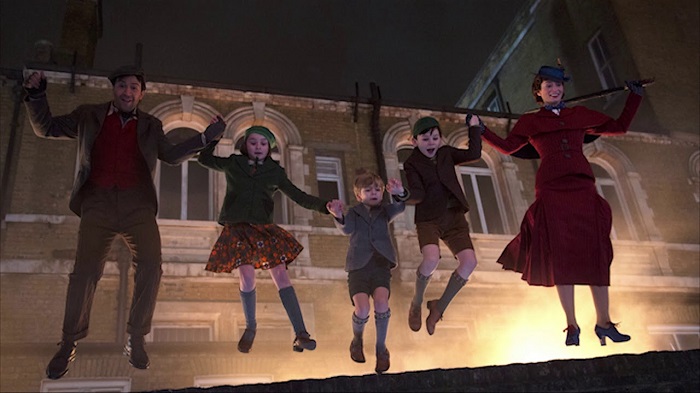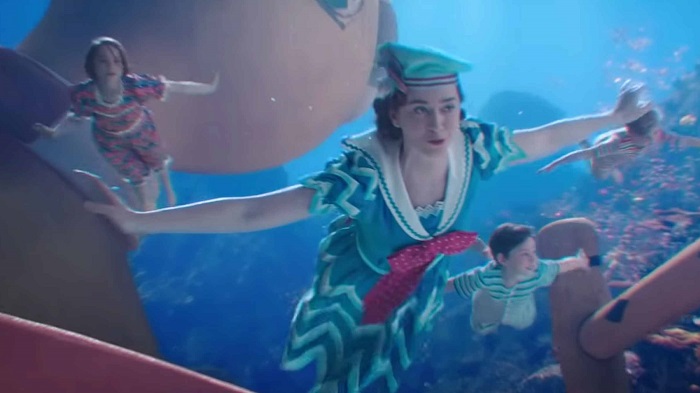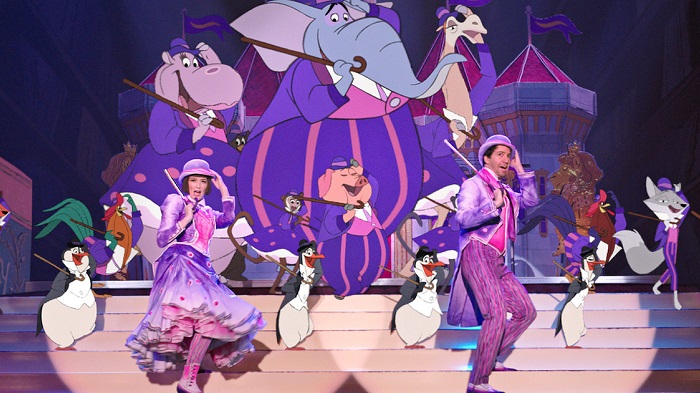Creating the imagery that would rhyme with Disney’s old classic movie Mary Poppins Returns was a mammoth task that director Rob Marshal realised very well. With the advancements of modern times yet the slant of 1930’s London, Mary Poppins VFX was created by the joint effort of two studios; Framestore and Duncan Studio as it was a rare amalgamation of 2D, 3D and live-action elements in a single frame.

Speaking about the processes deployed to recreate the classic, Framestore CG supervisor Alan Wood shares, “You’ve got big musical numbers in there. It was a mid-size show for Framestore roughly 470 shots in total originally based in Montreal office but it ended up being split between London and Montreal in the end. It was always going to be a unique project. It was always going to be tricky. We had to work with an external 2D animation Vendor called Duncan Studios and small children and we all know that it can sometimes go quite badly wrong”

Framestore was the lead VFX company for Disney’s Mary Poppins Returns, delivering 470 sparkling shots across 32,000 frames that accompanied some of the film’s key musical numbers and contributed to the rich, detailed, stylised look of the film.
One of the film’s magical moments was when our real-life heroes – Mary Poppins, lamplighter Jack and the Banks children – are transported to a colourful animated world. The scene features a lively music hall sequence (replete, of course, with dancing penguins) and culminates in a thrilling carriage chase, with the merging of traditional animation and modern VFX a tag-team operation between Framestore’s Montreal team and the animators at Duncan Studios. “Integrating the 2D and 3D universes definitely threw up some challenges,” says VFX Supervisor Christian Kaestner. “Balancing perspectives and allowing the right amount of modernity to filter into that exquisite hand-drawn world required a great deal of time and thought. The pacing is so dynamic and the choreography so precise that we really had our work cut out when it came to capturing the light, texture, shade and geometry of the scene. Helping bring together the superb direction and choreography, the fantastic performances and Duncan Studios’ artwork for the seated, animated audience was a lot of fun but also a lot of work – for example, we actually recreated the music hall’s stage and lighting rig to get things just right.”
 Wood adds, “So I asked the Visual Effects supervisor in his presentation to really sum it up for me and what we put to me was that you can imagine a 3D truck pulling a car driven by a 2D fox, a badger and a Weasel chased by a 2D horse pulling a CG carriage over three live-action children, what could go wrong? The big Mickey Mouse thing in the room is the Disney gave us the live-action crowned jewels and Mary Poppins is their iconic and absolutely Top-drawer franchise Ips That’s why they gave us their admonitions, Don’t Screw it up. It was quite a clear brief. Don’t Screw it up.”
Wood adds, “So I asked the Visual Effects supervisor in his presentation to really sum it up for me and what we put to me was that you can imagine a 3D truck pulling a car driven by a 2D fox, a badger and a Weasel chased by a 2D horse pulling a CG carriage over three live-action children, what could go wrong? The big Mickey Mouse thing in the room is the Disney gave us the live-action crowned jewels and Mary Poppins is their iconic and absolutely Top-drawer franchise Ips That’s why they gave us their admonitions, Don’t Screw it up. It was quite a clear brief. Don’t Screw it up.”
A sense of the traditional merging with ultra-modern craftsmanship permeates the film, with Framestore’s environment work frequently nodding to the first film’s exquisite matte paintings. “We definitely wanted to tip our cap to the beautiful paintings that Peter Ellenshaw created for the first Mary Poppins film,” says Kaestner. “Ellenshaw and his contemporaries worked to convey a mood or an atmosphere rather than striving for note-perfect accuracy. While we adopted a more realistic approach to our backdrops, the original matte paintings were certainly there in the back of our minds, and we definitely tipped our hat to them in terms of the colour palettes we employed.”

If Framestore’s work below the ocean was a question of balance and style, the VFX work atop the ocean waves was all about painstaking technical craft. “When Mary, Jack and the Banks children emerge from the ocean depths piloting their bathtub, everything you see is VFX,” explains McCulloch. “I’m pretty sure this is the first time we’ve created such a huge, purely-VFX environment. We simulated the entire ocean, and the biggest challenge in doing so was definitely the foam. You might think those enormous foambergs were simple, but getting the right mix of softness, solidity and airiness was a challenge worthy of The Great British Bake Off, while scattering light and life through them was a mix of pure science and pure art.”
The film involved the work of some hundreds of Framestore creatives, drawing from a pool of compositors, lighting experts, CG whizzkids, environment specialists and art department pros. “It was extraordinary,” sums up Kaestner. “It was a pleasure to work on the film, and a privilege to induct a whole new generation into the unique magical world of Mary Poppins.”
Mary Poppins is a case study in itself with the way this project was so brilliantly executed. We hope to share more insightful approaches to VFX imagery in cinema in future.
